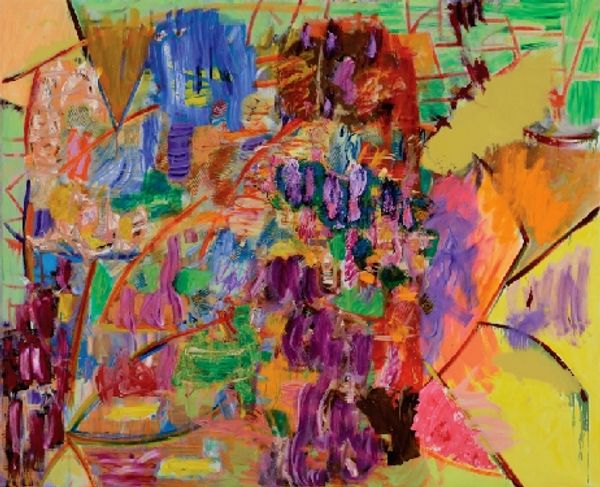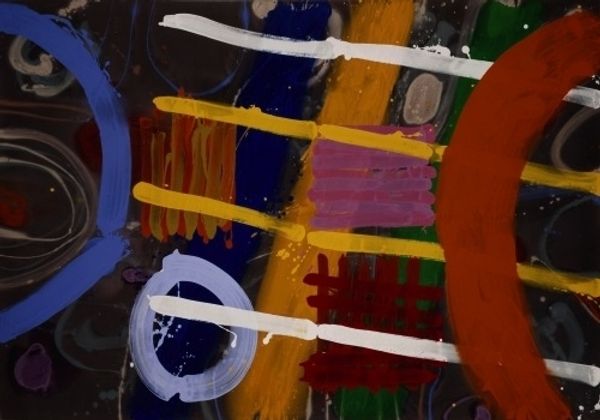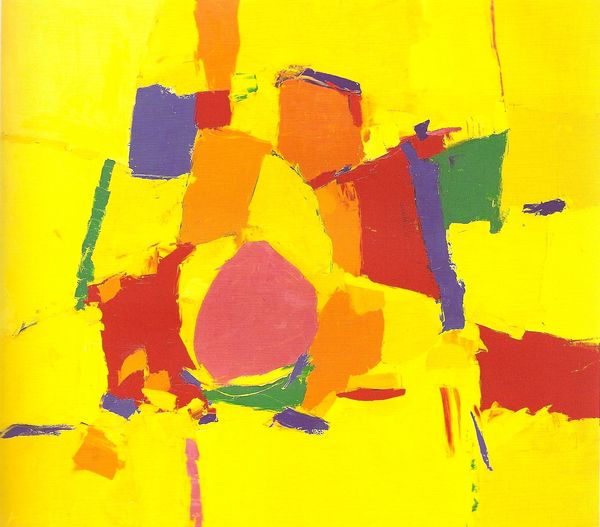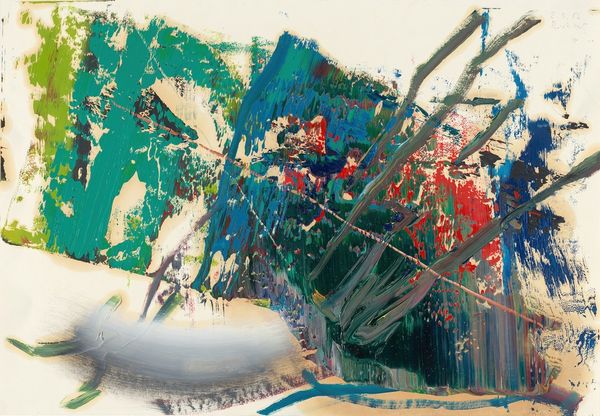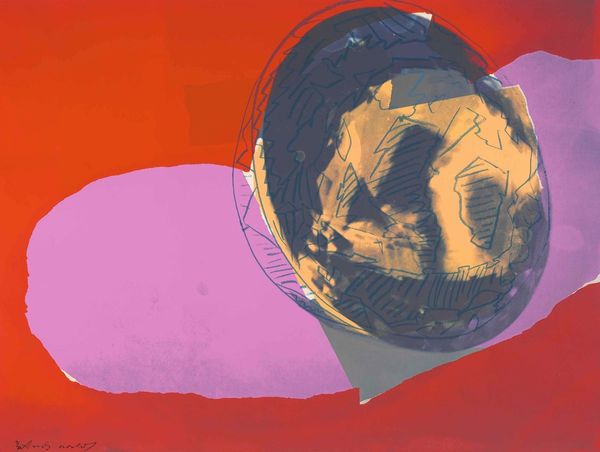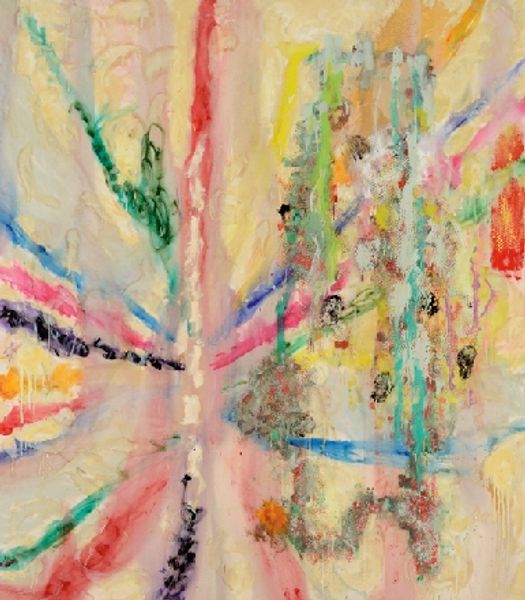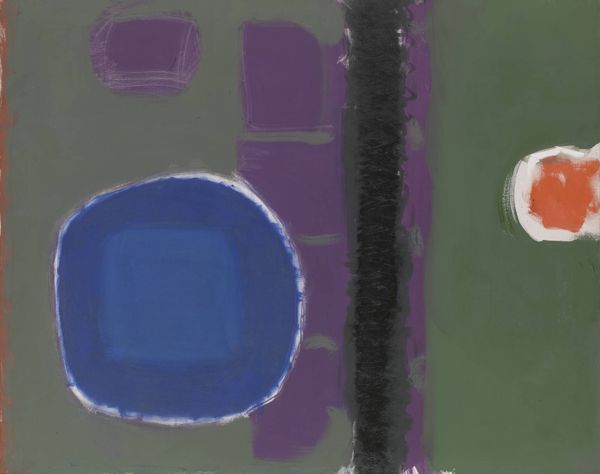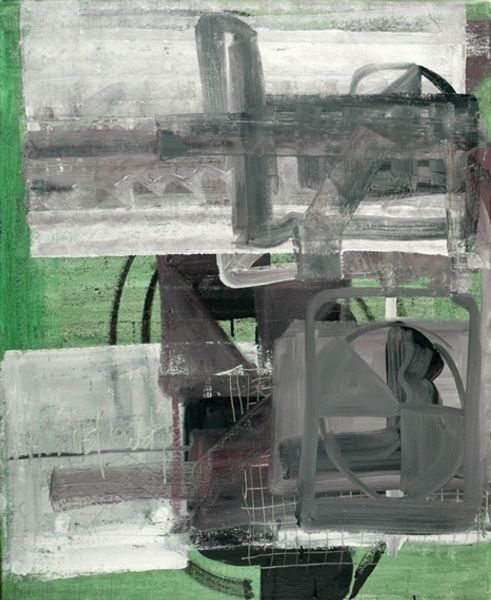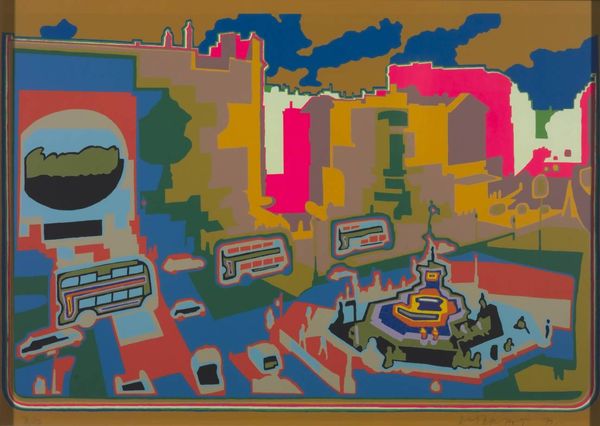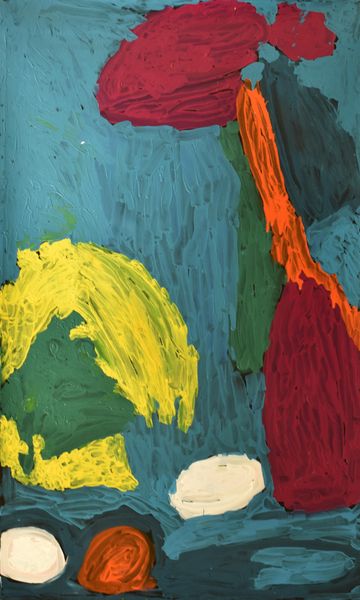
Copyright: Albert Irvin,Fair Use
Editor: We're looking at Albert Irvin's "Pomona" from 1991, an acrylic on canvas piece. The vibrant yellows and oranges immediately catch the eye, and the bold brushstrokes feel almost impulsive. It's quite a lively piece. What stands out to you? Curator: What grabs me is the explicit display of its own making. Look at how Irvin deploys the acrylic paint, its viscosity and application so self-evident. Notice the varying pressure, the streaks, the pooling in areas – it all emphasizes the physicality of the paint and the performative act of applying it. Do you get the sense that the process itself takes precedence? Editor: I do. It feels very process-oriented, not like he was trying to replicate something from the real world. I'm interested in how the labor informs it. Curator: Exactly. Think about the labor of artmaking in the late 20th century. Acrylics offered artists like Irvin new possibilities – faster drying times, brighter colors – impacting their working pace and aesthetic choices. "Pomona" revels in this technological shift. Could you imagine a similar effect achievable with oil paints, given their slower drying time and different materiality? Editor: That's a great point. Oils would lend themselves to a much different kind of layering and blending. There’s a raw energy in "Pomona" that might be lost. The layering makes me wonder too if Irvin wanted us to read the labor of making and unmaking… covering up some initial marks and making new ones. Curator: Precisely. He's laid bare his artistic choices and the mechanics of paint itself. Ultimately, by focusing on materials and processes we can move beyond the formal and conceptual toward an understanding of the socio-economic contexts of its creation and reception. Editor: I never thought about abstraction being related to consumption and materialism! That's a really insightful approach. Thank you.
Comments
No comments
Be the first to comment and join the conversation on the ultimate creative platform.
